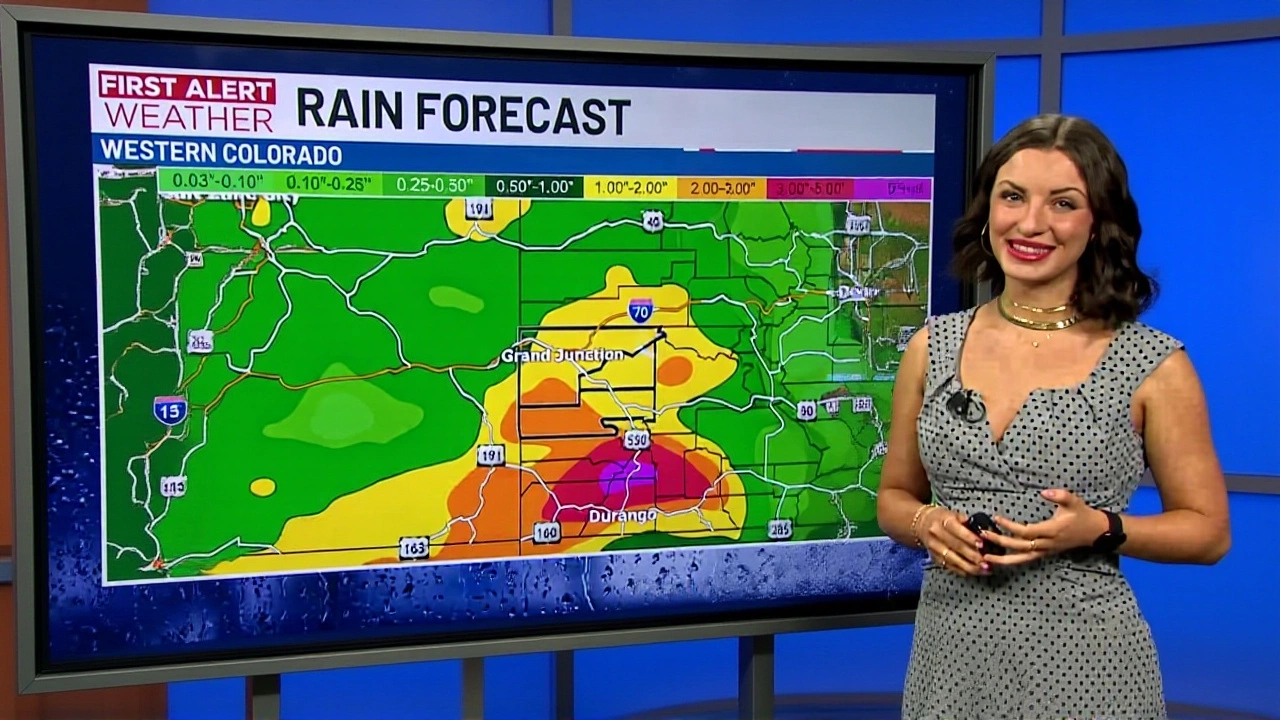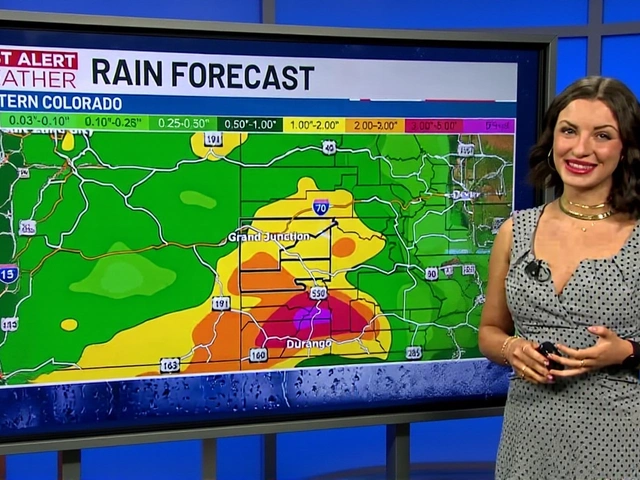
Missouri Heatwave Sparks Drought, Texas Faces Wildfire Surge
During the early October 2025 heatwaveMissouri and Texas, temperatures surged well beyond what locals consider normal, sending drought alarms across the Midwest and igniting wildfire worries in the Lone Star State.
On October 1, 2025, Columbia, Missouri sweltered at nearly 86°F, a full 12°F above the historical October average of 74°F, according to a report by ABC17 News. The month‑long warmth didn’t stop at the skyline; September’s state‑wide average of 84°F was 3.9°F hotter than the 80.1°F norm, creating a clear‑cut temperature anomaly.
Warming Trend and Record Rainfall Gaps
Missouri’s September rainfall measured just 2.06 inches, nearly half of the 3.83‑inch historical average – a deficit of 1.77 inches or 46.2 % below normal. The U.S. Drought Monitor classified 64 % of the state’s land as experiencing some level of drought by early October, and every county reported “abnormally dry” conditions.
That moisture shortfall builds on a summer that only delivered 62 % of its usual precipitation. The trend mirrors a broader shift: a 2–3°F rise in Missouri’s fall temperatures since the 1970‑2024 baseline, echoing a 4°F rise across the western United States over the same period.
Texas’s Dry Spell and Wildfire Threat
Just west of the Mississippi, the National Weather Service's Climate Prediction Center warned that above‑average heat was "heavily favored to continue through at least Oct. 17, 2025" across South Texas and much of the state. An interview on October 5 with a meteorologist on Texas Standard summed it up: “It’s definitely going to start off on a dry note… East and Central Texas will probably stay on the drier side for the next several weeks.”
Wildfire danger is now labeled “Very High” in 50 counties of the Texas Hill Country and 38 counties of the Piney Woods, per the Texas A&M Forest Service. As of September 30, 2025, 87 of Texas’s 254 counties sat in moderate to severe drought – up 15 counties from the start of the month.
Economic and Agricultural Fallout
The heatwave’s toll is already showing up in balance sheets. The Missouri Department of Agriculture reported $12.7 million in crop losses, chiefly soybeans and corn, across the state’s top ten producing counties. In Texas, wildfire suppression costs hit $8.3 million in September alone, while the Texas Department of Insurance logged 47 wildfire‑related property claims totaling $4.2 million between September 15‑30.
What the Forecast Holds
Looking ahead, the National Weather Service will refresh its 8‑14‑day outlook on October 10, 2025. The next U.S. Drought Monitor assessment, also due that Thursday, could reshape the drought map if any rain finally breaks the dry spell.
That meteorologist from Texas Standard hinted at a possible shift: “We may start to see things change in a week or so, particularly for West Texas.” Still, the consensus is that East and Central Texas will remain dry through late October, while West Texas might catch a brief reprieve.
Key Takeaways
- Missouri’s high on Oct. 1 was 86°F – 12°F above normal.
- September rainfall in Columbia fell 46 % short of average.
- 64 % of Missouri is in drought; 87 Texas counties face moderate‑to‑severe drought.
- Economic losses: $12.7 M (MO agriculture) and $8.3 M (TX wildfire suppression).
- Wildfire danger classified “Very High” in Hill Country and Piney Woods.
Frequently Asked Questions
Why is the early October heatwave more severe than typical October weather?
The heatwave reflects a lingering summer‑like ridge of high pressure that has trapped warm air over the central United States. Climate data show a 2‑3°F rise in Missouri’s October averages since 1970, amplifying the temperature spike to nearly 86°F in Columbia.
How are Missouri farmers coping with the drought?
Many are turning to supplemental irrigation and shifting planting schedules where possible. The Missouri Department of Agriculture has launched emergency assistance programs, but the $12.7 million loss estimate shows the strain is already deep.
What factors are driving the elevated wildfire risk in Texas?
Prolonged dry conditions, low humidity, and sparse rainfall have desiccated vegetation across the Hill Country and Piney Woods. Combined with temperatures above 90°F in many East Texas counties, the environment is primed for rapid fire spread.
When can residents expect relief from the dry spell?
Models suggest a modest chance of rain in West Texas within the next week, but East and Central Texas are likely to stay dry through the end of October. The next official outlook on October 10 will clarify any emerging patterns.
How does this heatwave compare historically?
Missouri’s September 2025 warmth ranks as the fifth‑hottest September in the state’s 129‑year record. In Texas, it marks the third consecutive month with statewide averages exceeding 82°F, underscoring an unprecedented early‑season heat trend.






Write a comment